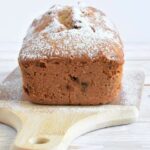Fondant has become increasingly popular as a decorative tool for cakes, captivating both amateur bakers and professional cake decorators alike. Its smooth, flawless finish and versatility in creating intricate designs have made fondant a go-to choice for many. However, one question that often arises is whether fondant can be used to decorate a frozen cake. In this article, we will explore the possibilities and challenges of decorating a frozen cake with fondant.
Fondant, typically made from sugar, water, and gelatin or glycerin, is known for its pliability and ability to hold its shape. It can be rolled out into thin sheets or sculpted into various shapes, making it ideal for creating decorations like flowers, bows, or even entire cake coverings. However, the question remains: Can these impressive results be achieved on a cake that has been frozen?
Before delving into the specifics of decorating frozen cakes with fondant, it’s important to understand the freezing process itself and its impact on cakes. Freezing cakes can help preserve them for longer periods and make them easier to work with when it comes to applying frosting or icing. However, freezing can also affect the texture and moisture of the cake.
So how does this translate to working with fondant? Is it possible to achieve the same level of perfection when using fondant on a frozen cake? Join us as we uncover the answers and discover the art of fondant on frozen cakes.
Understanding Fondant as a Decorative Tool for Cakes
Fondant has gained immense popularity in the world of cake decoration due to its versatility and ability to create stunning designs. This smooth, sugar-based dough-like icing is known for its pliability, making it perfect for creating intricate details, unique shapes, and flawless finishes on cakes. However, there are common misconceptions and challenges associated with working with fondant that need to be understood before attempting to decorate a frozen cake with it.
Exploring what fondant is and its characteristics
Fondant is a type of icing that is made primarily from sugar, water, and gelatin or marshmallows. It has a smooth texture and can be rolled out into sheets or molded into various shapes for decorative purposes. The pliability of fondant allows cake decorators to create elaborate designs such as bows, flowers, and even lifelike sculptures.
One of the key characteristics of fondant is its ability to provide a flawless finish to cakes. Unlike buttercream icing, which can have visible imperfections or crumbs on the surface, fondant creates a smooth canvas that is ideal for intricate decorations or custom designs. This makes it a popular choice for special occasions like weddings or birthdays where perfection is desired.
Highlighting the versatility of fondant
Fondant offers endless possibilities when it comes to cake decoration. It can be tinted with food coloring to create vibrant hues or even painted on directly for more intricate designs. Additionally, it can be easily shaped and molded into three-dimensional figures or used as a covering for an entire cake.
Another advantage of fondant is that it provides a long-lasting finish on cakes. Once applied correctly, fondant acts as a protective barrier against air and moisture effectively sealing in the freshness of the cake underneath. This enables cakes decorated with fondant to have an extended shelf life compared to those decorated with buttercream icing.
Addressing misconceptions and challenges
Working with fondant can be challenging, especially for beginners. One common misconception is that fondant is difficult to use or may harden too quickly. However, with the right techniques and practices, working with fondant can be achieved smoothly.
Another challenge involves achieving a flawless finish on the cake’s surface. Fondant requires careful handling to avoid wrinkles, air bubbles, or tearing. It also requires skill and patience to smooth out any imperfections once it has been applied to the cake.
Furthermore, some individuals have concern about the taste of fondant as it tends to have a sweeter flavor than buttercream icing. Nevertheless, many professionals are now including flavorful fillings or buttercream between the layers of the cake to counterbalance sweetness and enhance overall taste.
Understanding the characteristics and versatility of fondant as a decorative tool for cakes is crucial before attempting to decorate a frozen cake with it. By becoming familiar with how fondant works and addressing any misconceptions or challenges associated with it, one can confidently embark on creating beautiful designs on frozen cakes using this exquisite medium.
The Freezing Process and Its Impact on Cakes
The freezing process is a common technique used to preserve cakes, as it helps extend their shelf life and makes them easier to work with for future decorations. Freezing can have an impact on the texture and moisture of a cake, which raises questions about its compatibility with fondant. Can you actually decorate a frozen cake with fondant without compromising its quality and appearance?
When a cake is frozen, the low temperature causes the water content in the cake to freeze into ice crystals. These ice crystals can affect the structure of the cake, resulting in slight changes in texture. However, if properly thawed, these changes are usually minimal and barely noticeable.
One concern when using fondant on a frozen cake is the potential for condensation or sweating once the cake starts to thaw. When moisture forms on the surface of a cake, it can cause the fondant to become sticky or dissolve, leading to a messy appearance. To prevent this issue, it is essential to allow the cake to thaw completely at room temperature before applying fondant. This ensures that any trapped moisture evaporates before adding the decorative layer.
Additionally, it’s important to note that not all types of cakes hold up well to freezing. Dense cakes like pound cakes or fruitcakes tend to freeze better than light and fluffy cakes. The denser texture helps maintain their structure during freezing and thawing, making them more suitable for decorating with fondant.
While some concerns exist regarding freezing cakes for fondant decoration, proper preparation and techniques can help achieve excellent results. In the next section, we will discuss necessary preparations before working with fondant on a frozen cake and provide tips for successfully applying fondant without compromising its appearance or taste.
Necessary Preparations Before Working with Fondant on a Frozen Cake
Before working with fondant on a frozen cake, there are a few necessary preparations that need to be made to ensure the best results. Freezing a cake for fondant decoration requires proper techniques and precautions to maintain the texture and quality of the cake. Here are some essential tips to follow before you start working with fondant on a frozen cake:
- Efficiently freezing a cake: When preparing a cake to be decorated with fondant after freezing, it’s important to wrap it tightly in plastic wrap or place it in an airtight container. This will prevent any moisture from seeping into the cake during the freezing process.
- Thawing the frozen cake: Once you’re ready to decorate your frozen cake, it’s crucial to thaw it properly before applying fondant. Remove the wrapped or containerized cake from the freezer and let it thaw in its packaging at room temperature for several hours or overnight.
- Crumb coat and necessary equipment: Before applying fondant, it’s recommended to give your thawed cake a crumb coat-a thin layer of buttercream frosting-to seal in any loose crumbs and create a smooth surface for the fondant. Additionally, make sure you have all the necessary tools and equipment ready, such as a rolling pin, fondant smoothers, and cornstarch or powdered sugar for dusting.
By following these necessary preparations, you’ll set yourself up for success when working with fondant on a frozen cake. The efficient freezing process and proper thawing method ensure the integrity of the cake while allowing you to create beautiful designs using fondant as your decorative medium.
Techniques for Fondant Application on a Frozen Cake
When it comes to decorating a frozen cake with fondant, there are specific techniques that can help ensure a smooth and flawless finish. While working with fondant can be challenging enough on its own, adding the element of a frozen cake adds an additional level of difficulty. However, with the right approach and proper techniques, it is definitely possible to create beautiful fondant decorations on a frozen cake.
To begin, it is crucial to properly thaw the frozen cake before applying the fondant. This can be done by transferring the cake from the freezer to the refrigerator and allowing it to slowly thaw overnight. Once it has reached room temperature, remove the cake from the refrigerator and let it sit for about 30 minutes before starting the decoration process. Thawing the cake slowly helps reduce condensation or moisture build-up on the surface.
Before applying the fondant, it is essential to use a crumb coat. This thin layer of frosting helps seal in any loose crumbs and provides a smooth surface for the fondant to adhere to. Start by applying a thin layer of buttercream or ganache all over the cake using an offset spatula. Smooth out any imperfections using a bench scraper or palette knife until you have an even coating on your cake.
Once your crumb coat is applied, it’s time to roll out your fondant and cover your cake. Dust your work surface with powdered sugar or cornstarch to prevent sticking. Roll out your fondant into a thin, even circle that is slightly larger than your cake size.
Lift the rolled-out fondant using a rolling pin and gently drape it over your cake. Use your hands or smoother tools to gently press and smooth out any air bubbles or wrinkles from top down towards the sides of the cake.
Once you have successfully covered your frozen cake with fondant, you can now focus on achieving a flawless finish. Use a fondant smoother or your hands to gently smooth out the surface of the fondant, working from top to bottom.
If any air bubbles or wrinkles are present, use a pin or small knife to release the air and smooth out the area. Pay special attention to the edges of the cake as they tend to be more prone to cracking or tearing.
By following these techniques for applying fondant on a frozen cake, you can create stunning decorations with a smooth and professional finish. With practice and patience, you’ll be able to master this technique and confidently decorate frozen cakes with fondant. Remember that practice makes perfect, so don’t be afraid to experiment and try different techniques until you achieve your desired result.
Decorative Possibilities with Fondant on a Frozen Cake
When it comes to cake decoration, fondant opens up a world of possibilities. Its smooth and pliable texture allows for intricate designs and beautiful creations that can truly elevate any cake. The question that arises is whether fondant can be used to decorate a frozen cake. In this section, we will explore the endless creative options when decorating a frozen cake with fondant.
Endless Creative Options
Decorating a frozen cake with fondant opens up a whole realm of creative possibilities. From simple designs to intricate masterpieces, there are no limits to what you can achieve with fondant on a frozen cake. You can create stunning patterns, add delicate flowers or figures, or even replicate scenes from movies or books.
One popular technique when using fondant on frozen cakes is the “impression” method. By rolling out the fondant and gently pressing textured molds onto its surface, you can create intricate patterns and designs that give your cake an elegant touch.
Another creative option is to use cut-out templates. These templates allow you to create precise shapes and designs by simply cutting out pieces of fondant and placing them strategically on the cake. Whether it’s letters, numbers, or intricate lace patterns, using cut-out templates adds a personalized touch to your frozen cake.
Ideas and Inspiration
If you’re looking for inspiration when it comes to decorating your frozen cake with fondant, the possibilities are endless. Here are some ideas to get your creativity flowing:
- Floral Blooms: Create delicate flowers using different colored fondants and assemble them into a beautiful bouquet atop your frozen cake.
- Novelty Designs: Bring your favorite characters or objects to life by molding them out of fondant and placing them as decorative elements on your frozen cake.
- Abstract Creations: Experiment with different shapes, sizes, and textures to create abstract and artistic designs. Let your imagination run wild.
- Geometric Patterns: Use fondant to create geometric patterns, such as chevron or herringbone, for a modern and stylish look on your frozen cake.
- Elegant Lace: Roll out intricate lace patterns using fondant and delicately place them on your frozen cake for an added touch of sophistication.
Remember, these ideas are just the tip of the iceberg. Let your creativity shine and explore different techniques and designs to make your frozen cake truly unique.
Examples of Beautiful Fondant Decorations
To showcase the possibilities of decorating a frozen cake with fondant, let’s explore some examples of stunning fondant decorations:
- Wedding Cake: A three-tiered frozen wedding cake decorated with elegant white fondant, adorned with delicate sugar flowers and intricate lace patterns.
- Fairy-tale Cake: A whimsical frozen cake featuring fondant figures of characters from beloved fairy tales, surrounded by hand-painted fondant trees and flowers.
- Baby Shower Cake: A pastel-colored frozen cake decorated with adorable fondant baby booties and a handcrafted fondant bowtie.
- Holiday-themed Cake: A festive frozen cake covered in red and green fondant, topped with edible snowflakes made out of intricately shaped white fondant.
- Sports-themed Cake: A frozen cake covered in green turf-like fondant, with miniature balls made from colored fondants representing various sports.
These examples highlight the versatility of using fondant on a frozen cake when it comes to creating visually stunning cakes for any occasion.
Decorating a frozen cake with fondant allows you to unleash your creativity and achieve beautiful and professional-looking cakes. The next section will address potential challenges that may arise when attempting this technique, as well as provide troubleshooting tips to ensure a successful outcome.
Potential Challenges and Troubleshooting Tips
Decorating a frozen cake with fondant can present some unique challenges. While it is certainly possible to achieve beautiful results, there are a few potential issues that may arise during the process. Understanding these challenges and having the right troubleshooting tips can help ensure success when working with fondant on a frozen cake.
One common challenge when decorating a frozen cake with fondant is condensation or sweating. When a frozen cake is brought to room temperature, condensation can form on the surface, making it difficult for the fondant to adhere properly.
To minimize this issue, it is important to thaw the cake in a controlled environment, such as inside a refrigerator or on a wire rack placed over a baking sheet. This allows any excess moisture to drip away and prevents buildup of condensation on the cake.
Another challenge that may occur is cracking or tearing of the fondant while applying or smoothing it onto the frozen cake. This can happen because the cold temperature of the cake makes the fondant more brittle. To prevent this, it is essential to let the frozen cake reach an optimal temperature before applying the fondant.
Thawing in a refrigerator for several hours or overnight is usually recommended. Additionally, working with smaller pieces of fondant at a time and gently stretching it over the cake can help reduce tension and minimize cracking.
If you encounter any issues while decorating your frozen cake with fondant, there are some troubleshooting tips that can come in handy. For example, if condensation does form on the surface of the cake after applying fondant, you can gently blot it away using paper towels or cornstarch-dusted hands.
If cracks appear in the fondant, they can be smoothed out by lightly rubbing them with vegetable shortening or using a small amount of water applied with a brush to soften and blend them together.
| Potential Challenges | Troubleshooting Tips |
|---|---|
| Condensation or Sweating | – Thaw the cake in a controlled environment to minimize condensation.
|
| Cracking or Tearing of Fondant | – Let the frozen cake reach an optimal temperature before applying fondant.
|
By being prepared for potential challenges and armed with troubleshooting tips, you can confidently decorate a frozen cake with fondant and achieve stunning results. Don’t be discouraged if you encounter any issues along the way – with practice and patience, you’ll become more adept at working with fondant on frozen cakes. Happy decorating.
The Final Result
When it comes to cake decoration, using fondant has become increasingly popular due to its versatility and ability to create stunning designs. However, one question that often arises is whether or not it is possible to decorate a frozen cake with fondant. In this section, we will explore the advantages and disadvantages of decorating a frozen cake with fondant and help you decide if it is worth the effort.
Advantages of Decorating a Frozen Cake with Fondant:
- Longer Decoration Time: One significant advantage of using fondant on a frozen cake is that it gives you more time to decorate. Freezing the cake allows you to work at your own pace without worrying about the cake becoming stale or losing its moisture.
- Improved Stability: Frosting a frozen cake with buttercream before applying fondant creates a stable base that helps hold the shape and structure of the cake. This stability makes it easier to achieve straight lines, sharp edges, and complex 3D designs.
- Extended Shelf Life: If you are creating a cake for an event that is several days away, freezing your decorated fondant cake can be advantageous. The frozen state helps preserve the freshness of the cake, allowing you to prepare in advance without compromising taste or texture.
Disadvantages of Decorating a Frozen Cake with Fondant:
- Texture and Moisture Concerns: While freezing preserves freshness, it can alter the texture and moisture level of a cake. Some cakes may become denser after being thawed from freezing, which can affect the overall eating experience.
- Condensation Challenges: When removing a frozen cake from the freezer and exposing it to room temperature air, condensation can form on the surface. This condensation can cause issues when applying fondant as it may prevent proper adherence or create a wet appearance on decorations.
- Additional Time and Preparation: Decorating a frozen cake with fondant requires careful planning and preparation. Thawing the cake properly, applying a crumb coat, and ensuring the right temperature are all necessary steps before working with fondant.
Conclusion
In conclusion, the art of decorating frozen cakes with fondant is both possible and rewarding. Throughout this article, we have explored the characteristics of fondant as a versatile decorative tool for cakes, debunked misconceptions about its compatibility with frozen cakes, and provided step-by-step instructions and troubleshooting tips for achieving flawless results. The question of whether you can decorate a frozen cake with fondant has been thoroughly answered, and the answer is a resounding yes.
By understanding the freezing process and taking necessary preparations before working with fondant on a frozen cake, you can ensure that the texture and moisture of the cake remain intact. Thawing the cake properly, applying a crumb coat, and using the right equipment are crucial steps in creating a smooth canvas for your fondant decoration. With techniques such as smoothing out the fondant and preventing cracking or tearing, you can achieve professional-looking results.
The possibilities for creativity when decorating frozen cakes with fondant are truly endless. From elegant designs to whimsical decorations, there is no limit to what you can create. Use this article as inspiration for different fondant designs and decorations or let your imagination run wild. The final result will be worth it-beautifully decorated cakes that not only impress visually but also taste delicious.
So go ahead, experiment, and try decorating your own frozen cakes with fondant. Don’t be afraid to showcase your creativity and express yourself through edible art. As professional bakers and cake decorators can attest, it is an art form that brings joy to both the creator and those who indulge in these masterpieces.
Let your next celebration be made even more special by adorning a frozen cake with stunning fondant decorations. Start exploring the art of fondant on frozen cakes today.
Frequently Asked Questions
Will fondant stick to a cold cake?
Fondant can generally stick to a cold cake, although it is not always recommended. When fondant is applied to a chilled cake, condensation can form on the surface of the cake as it warms up to room temperature.
This moisture can cause the fondant to become sticky and lose its shape. However, if you are working with a firm or dry fondant and take necessary precautions such as avoiding excessive condensation, chilling the cake for only a short period of time, and properly sealing it before refrigeration, fondant can adhere reasonably well to a cold cake.
Is it OK to decorate a frozen cake?
Decorating a frozen cake is possible but not without potential challenges. When icing or decorating a frozen cake, there are risks associated with condensation forming on the surface of the thawing cake, potentially causing issues with the frosting or decorations sticking properly.
For best results, it is recommended to partially thaw the cake until it is just firm enough to work with but still retains some chill. It’s essential to allow sufficient time for the cake to reach room temperature before serving so that any moisture can evaporate and prevent sogginess.
Do you frost a cake before you put fondant on it?
Yes, it is generally advisable to frost a cake before applying fondant over it. The frosting acts as an adhesive layer that helps the fondant adhere smoothly and evenly onto the surface of the cake.
A thin layer of buttercream or ganache works best as it provides an ideal base for the fondant to grip onto while also helping smooth out any imperfections on the surface of the cake. Additionally, frosting helps seal in any crumbs on the cake’s surface and provides stability for more intricate fondant designs.

Welcome to my blog about home and family. This blog is a place where I will share my thoughts, ideas, and experiences related to these important topics. I am a stay-at-home mom with two young children. I hope you enjoy reading it! and may find some helpful tips and ideas that will make your home and family life even better!





